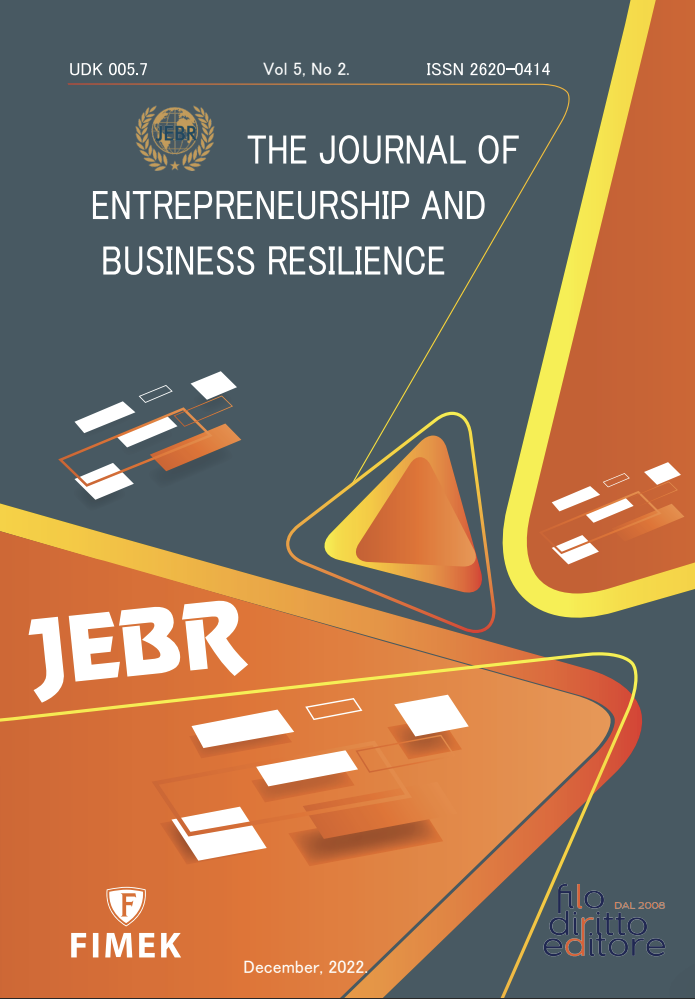BUILDING RESILIENCE AND IMPROVING LIVELIHOOD STATUS OF FARMERS THROUGH LIVESTOCK AND POULTRY FARMING IN CHAR AREA IN MYMENSINGH
Keywords:
building resilience, livestock, poultry farming, Char area, agricultural production, farmer’s livelihoodAbstract
The study was conducted to identify the critical elements important to farm-ers in the Char areas in Mymensingh district who are strengthening livestock and poultry farming, both of which are extremely beneficial to their families and communities. Data were collected from Char areas in Mymensingh district and the quantitative analytical tools employed to attain the specific objectives included various descriptive statistical measures, like average, percent and coefficient of different variables by Microsoft Excel and SPSS. The research found that although most respondents were economically in-active, they lacked a high level of education. They included in variety of jobs, including agricultural production, livestock care, and post harvesting operations and involve in small business. . The findings indicate that the respondent’s education, family size, household income, access to credit, and social involvement all had a substantial impact on the farmer’s livelihood. The study’s main conclusions were that approximately 35% of respondents were between the ages of 26-35; 46.67% had only completed primary educa-tion; all of respondents had agriculture as their primary occupation; and the average monthly income is 32,500 TK. The assets for a living were average. About 46.67% of respondents1.01 to 2.00 acres land ownership. Family income (per month) of respondents’ p-value was 0.00000156 smaller than 0.05, indicating that the relationship between family income (per month) of respondents and number of livestock were significant. The p-value for re-spondent household size was 0.02452702 which is less than 0.05, indicating that there was a significant relationship between the respondents’ house-hold size and number of livestock. P-value for land ownership (acre) was 0.275886167 higher than 0.05, indicating that the differences between land ownership (acre) and number of livestock were not statistically significant.
Therefore, government and other organizations must step up and develop more employment opportunities and educational facilities in order to im-prove their way of life and level of food security. Approximately 81.67% of respondents are maintained poor food security status. 80% of respondents are not any trained about agricultural farming. Although women are in-volved in livestock rearing, their contribution did not recognize socially and economically.
References
Bose, ML, Dey, MM: 2007: Food and nutritional security in Bangladesh: going beyond carbohydrate counts.
Mohiuddin, M, Islam, MS, Uddin, MT (2016). Poverty, food security status and coping strategies of marginal farm households in some selected areas of Bangladesh. Journal of Food Security 4(4) 86-94.
Rahman, M. A., & Rahman, MM (2011). Impact of livelihood practices on the char dwellers economic condition in riverine chars: case studies in Bangladesh. Journal of the Bangladesh Association of Young Researchers 1(1) 15-30.
Begum, MEA, Hossain, MI, Haese, LD (2013). Food security in Bangladesh: Present status and trend. Progressive Agriculture 24(1-2) 263-271.
Afza, J, Tama, RAZ, Begum, IA, Ethen, DZ (2015). Livestock and rural household food security: A case of Gazipur district of Bangladesh. International Journal of Innovation and Applied Studies 12(3) 747.
Jabbar, MA ,Baker , Fadiga M 2011: Animal-source foods in the developing world: Demand for quality and safety (No. 610-2016-40402).
Kasaye, HK, Bobo, FT, Yilma, MT, Woldie, M 2019: Poor nutrition for under-five children from poor households in Ethiopia: Evidence from 2016 Demographic and Health Survey. PloS one 14(12) e0225996.
Kabir,MS,Radović Marković, M, Radulović,D (2019). The determinants of in-come of rural women in Bangladesh. Sustainability 11(20) 5842.
Asaduzzaman, M. S., Kabir, R. N. Ali, Radović-Marković, Mirjana (2015), Gender Inequality in Bangladesh. Journal of Women’s Entrepreneurship and Education, Institute of Economic Sciences, Belgrade, 2015, (3-4). pp. 54-64.
ISSN 1821-1283
M. S., Kabir, Radović- Markovic,M., Grozdanic,R., Vukadinovic.,P. (2015). Rural Women’s Inequalities and Household Disparities, In: Economic Dynamics and Sustainable Development – Resources, Factors, Structures and Policies Proceedings, ESPERA 2015,Peter Lang, Brussels,Belgium, pp.415-435. ISBN: 978-3-631-69664-
Radović-Marković, M., (2018), Organizational resilience and business conti-nuity: Theoretical and conceptual framework, Journal of Entrepreneurship and Business Resilience, Year I , number 1,pp. 5-11.
Sabah Haseeb, H., et.al. (2019). A statistical and analytical study of the factors that impede women’s participation in the economic activities in Kirkuk, Iraq, International Review, No.3-4, 26-40.
Downloads
Published
How to Cite
Issue
Section
License

This work is licensed under a Creative Commons Attribution 4.0 International License.
http://creativecommons.org/licenses/by-nc-nd/4.0









